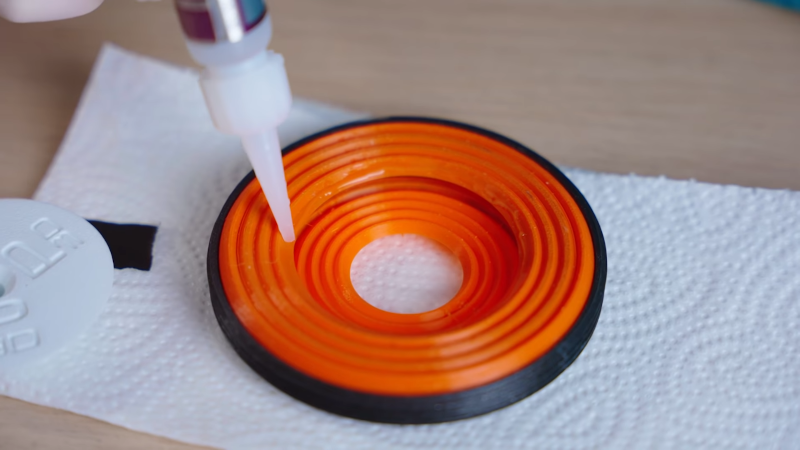[Thomas] is always up to some kind of 3D printing project. His latest? A fully 3D printed speaker. This is possible because of designs by [Paul Ellis] that use 3D printed materials for nearly all parts of the speaker. You can see and hear the speaker in the video below.
You might expect different parts of the speaker use different filaments. There are also different techniques such as the use of single-wall printing that makes the speaker possible.
There is a bit of hardware involved, and parts that need glue. You can’t just replicate a speaker in one pass, at least, not yet. [Thomas] tests the speaker with raw audio and also with some DSP processing to match the speaker’s characteristics. It isn’t going to put a dent in the audiophile speaker market, but it sounded fine.
The video mentions that this project is at the limit of what you can do with a common FDM printer. We don’t disagree, but we wonder what other “impossible” projects are really possible with a little ingenuity and invention.
We do see 3D-printed speaker enclosures regularly. We’ve also seen some good results with a 3D printer and a laser cutter, but those speakers do have more exotic store-bought parts.
















*not fully…
Well, it is a good shot and not far off, I would give them: *almost fully
It could be possible to metal 3D print the conductive parts, coil, wires, plug, etc..
Using compliant mechanisms could eliminate the need for adhesives.
Not sure there is anything for 3d printing magnets yet, but at least some folks have thought about it:
https://www.sciencedaily.com/releases/2016/10/161025115757.htm
But if I had a metal and magnet 3d printer capabilities handy to me, I doubt I would be make trivial speaker parts with that already have solutions.
the coil must be coated
In regard to magnets, another coil could be printed to supply a magnetic field.
Pretty cool project. It is replicating a traditional driver though. Wonder what people can come up with if they think outside the enclosure :)
You need first to understand the rules to know how to break them later. It’s just the first step.
So you’re suggesting I should break a rule. Excellent…
Very into speaker building nonsense, much to the annoyance of the wife. Presently building a set of Elsinore floor standers. Once they work and are tuned (all analogue and no DSP), I’ll make time for 3d printed driver fun.
Your wife is presently building a set of Elsinore floor standers?
IMO, you are a lucky man!
I bet sound quality would be better with a proper ring magnet. Google ring magnet, they’re cheap. As an alternate, copy the way speakers were made before there were ring magnets. They used a cylindrical magnet and a square cornered U shaped piece of metal. Cheaper than the ring magnets, the design persisted at least through the 70’s in OEM speakers for cars.
Also would benefit from acoustic dampening material in the enclosure. Removing resonances with dsp is all fine and good but it will introduce distorsions at some stage.
Electrostatic speaker maybe?
Thought about this a while back, piezo transformers are pretty useful.
Use two in opposition as a +/- HV source, running from a custom micro or just a pair of transistors.